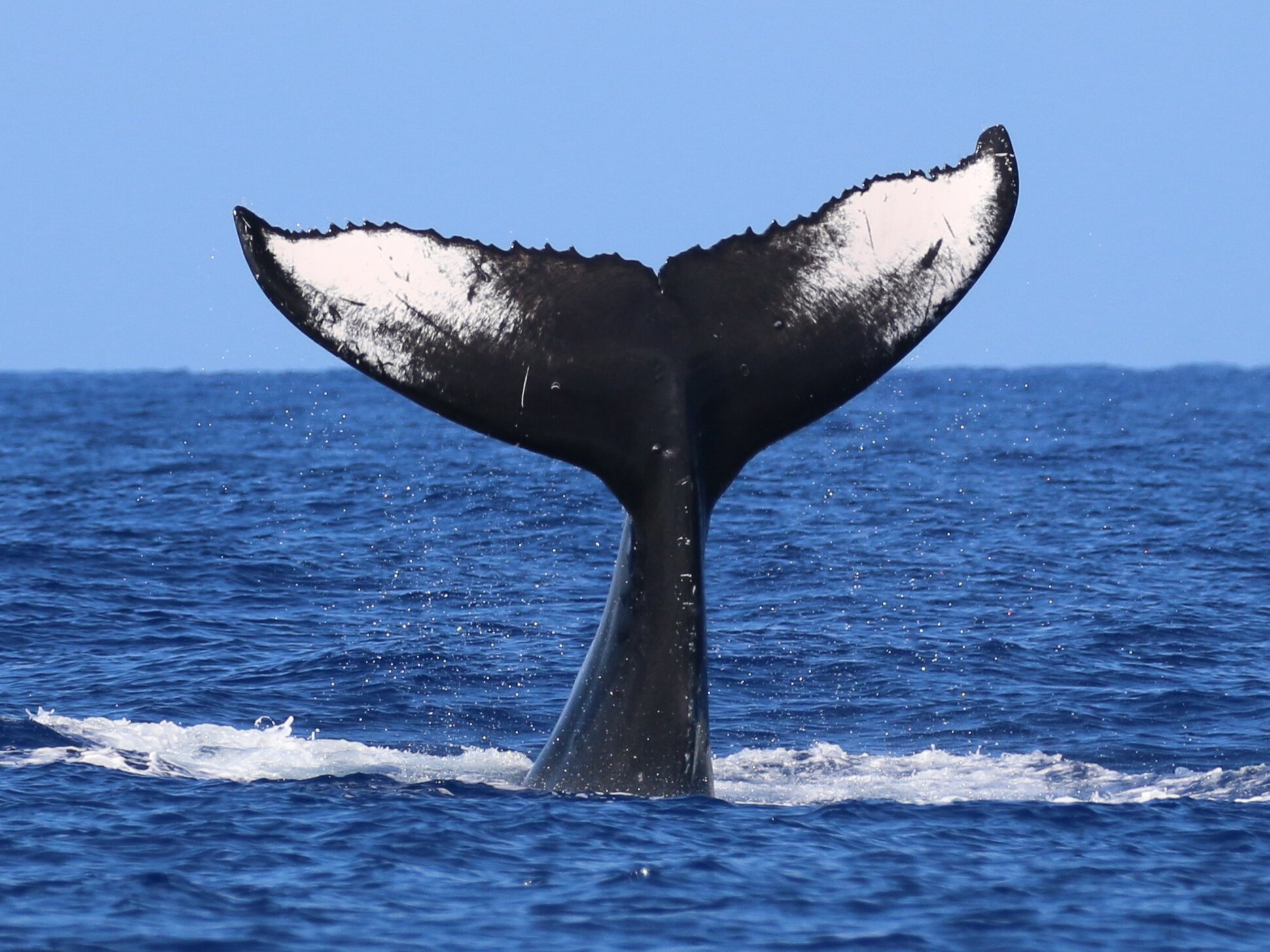The Power of Photos
Ever wonder how naturalists and researchers know the stories of individual whales? How some can tell you where a whale has traveled, how old it is, how many calves it’s given birth to? A key tool in piecing together the chapters of a whale’s life is photo-identification. What’s that you ask? Let’s break it down…
By photographing identifying features on individual whales, such as the dorsal fin of a dolphin, we can compare new photos to past pictures taken and search for matches. Photo-identification revolutionized the field of cetacean research, allowing us to non-invasively track individuals over time. This simple technique coupled with field observations can reveal much about the life history of an individual, and if enough individuals are tracked and documented it can reveal much about the life history of the species! For example, let’s say someone took a photograph of a humpback’s flukes in 1993, then found that those flukes match an individual photographed in 2021. Well, we would know that individual is at least 28 years old, and if the 1993 encounter had noted that the whale was an adult at the time, we could add several years to that estimated age. If that humpback had been traveling with a calf by its side, we would know that it is likely a female of reproductive age. If it is photographed in Alaska and then off the Big Island, you would better understand its migratory habits. Get the idea?
Photographs don’t just teach us about life history, documentation of scars and injuries can tell a story of the obstacles an individual has faced and overcome. Do we see rake marks indicating a past encounter with killer whales? Are there injuries associated with past entanglement? Is there evidence of propeller wounds or ship strike? These are all obstacles, both natural and human caused, that whales face in their ocean home. Understanding how to interpret and read these scars can provide insight into the frequency and severity of threats. When it comes to cetacean research, a picture really can be worth a thousand words!
So next time you join us on the water, you might notice our crew always have a camera ready for just this reason. In fact, below are some photos of memorable individuals we’ve documented during our trips this past month. These photos will help add to their stories and assist in ongoing cetacean studies in the region.
Interested in experiencing our tours?
Join us, experts with over 25 years of experience running professional wildlife tours. Hawaiian Adventure’s tours provide the best opportunity to explore Kona’s coast and the wildlife beneath the waves. Our top-notch vessels, experienced crew, and oceanic expertise will make your Big Island adventure unforgettable. If you’ve been on other tours, you’ll appreciate the Hawaiian Adventures difference.





